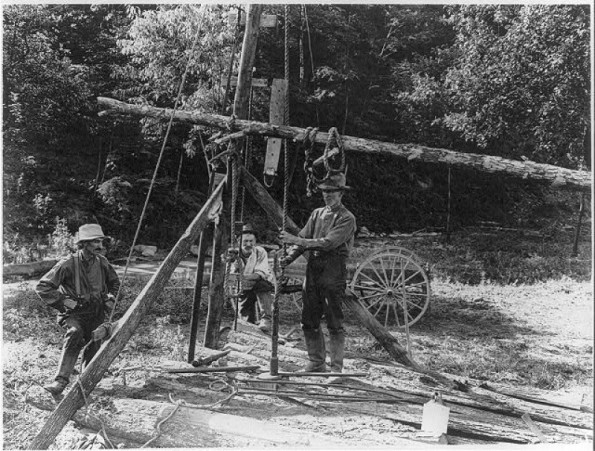by Bruce Wells | May 26, 2025 | This Week in Petroleum History
May 26, 1891 – Carbon Black Patent leads to Crayola –
Edwin Binney and C. Harold Smith received a patent for an “Apparatus for the Manufacture of Carbon Black.” The Binney & Smith process created a fine, intensely black soot-like substance — a pigment blacker than any other. Its success would lead to another petroleum product, Crayola crayons.

Edwin Binney in 1891 patented a petroleum-burning “Apparatus for the Manufacture of Carbon Black.” Twelve years later, Binney & Smith produced another oilfield product, Crayola, named by his wife Alice.
After introducing a popular black crayon called Staonal (stay-on-all) the Pennsylvania company began manufacturing Crayola crayons in 1903 using paraffin hand-mixed pigments. Each box contained eight colors: red, orange, yellow, green, blue, violet, brown and black.
Learn more in Carbon Black and Oilfield Crayons. (more…)
by Bruce Wells | Feb 20, 2024 | Petroleum Technology
The science behind petroleum exploration and production — and finding oil and natural gas at greater depths.
“A good cable-tool man is just about the most highly skilled worker you’ll find,” one veteran of the oil patch noted. “Besides having a feel for the job, knowing what’s going on thousands of feet under the ground just from the movement of the cable, he’s got to be something of a carpenter, a steam-fitter, an electrician, and a damned good mechanic.” – A 1939 interview in Voices from the Oil Fields by Paul Lambert and Kenny Franks.
Petroleum exploration technologies have evolved from ancient “spring poles,” to steam-powered percussion cable-tools, to modern rotary rigs with steerable, diamond bits that can drill miles deep.

Often used for drilling brine wells, a “spring-pole” well discovered oil in Appalachia. Photo from “The World Struggle for Oil,” a 1924 film by the U.S. Department of the Interior.
“A cable tool driller knows more knots and splices than any six sailors you can find,” recorded historians Lambert and Franks in their 1984 book, a collection of 1930s Federal Writers Project interviews about oilfield life.

The book’s collection — featuring descriptions of cable-tools with giant “bull wheels” spinning off manila rope — includes many firsthand accounts of the “grueling toil, primitive living and working conditions, and ever-present danger in a time when life was cheap and oil was gold.”

Standard cable-tool derricks stood 82 feet tall and were powered by a steam boiler and engine using a “walking beam” to raise and lower drilling tools. Image from The Oil-Well Driller, 1905.
Drilling or “making hole” began long before crude oil or natural gas were anything more than flammable curiosities found seeping from the ground.
For centuries, digging by hand or shovel were the best technologies that existed to pry into the earth’s secrets. Oil provided a balm for injuries. Natural gas seeps — when ignited — created folklore and places called “burning springs.” (more…)





